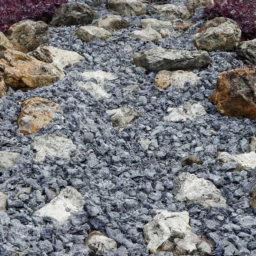Landscaping Rock How Deep
How Deep Should Landscaping Rock Be
How Deep Should Landscaping Rock Be?
Landscaping rock provides a great way to add texture, color, and definition to your landscaped areas. When deciding how much rock should be used, it is important to consider factors such as the area you are landscaping, the type of rock, and how deep you should place the rock. This article will delve into each of these topics to give a comprehensive answer on how deep should landscaping rock be.
Features of Landscaping Rock
When considering the features of landscaping rock, there are some key features to consider. Firstly, the type of rock you choose will determine the unique look of your landscaped area. The rocks can be natural or decorative and there are numerous different types, such as river rock, stones, pea gravel, and crushed stone.
In addition to the type of rock, the texture, color, and size of the rock is also important. This will affect the overall design of your landscaped area and will create a certain look and feel. Be sure to choose the right type of rock for your landscaping design so it appears balanced and visually pleasing.
Benefits of Landscaping Rock
In addition to the features of landscaping rock, there are many benefits that come along with using this material in your landscaping. Firstly, it is 20-30% cheaper than material such as concrete, pavers, and asphalt. Additionally, it is much easier and faster to install, requiring less labor and making for a quicker installation process.
Landscaping rock is also much more durable than other materials and is very low maintenance. This means that you do not have to reseal, restain, or repair the rock like you do with other materials and that it will last a long time in outdoor areas.
Finally, landscaping rock is also incredibly versatile. It can be used for many purposes and looks great in any landscaping design.
Pro and Cons of Landscaping Rock
When considering whether or not to use landscaping rock in your landscaping design, it is important to take into account both the pros and cons of this material.
The pros of using landscaping rock are that it is less expensive, easier and faster to install, more durable and low maintenance, and very versatile.
The cons of using landscaping rock are that it can be difficult to compact and can move around easily, making it difficult to keep in place. Additionally, if the rock is not installed properly, it can lead to drainage problems in your landscaped area.
Case Studies
To better understand the ins and outs of using landscaping rock in your landscaping design, it is beneficial to take a look at some case studies.
The first case study comes from Oklahoma City, Oklahoma. In this area, landscaping rock is used to create a unique look and feel in residential neighborhoods. It adds texture and color to these outdoor areas, creating a cozy and inviting ambiance.
The second case study comes from San Diego, California. In this area, landscaping rock is used to create a desert-like aesthetic. It creates a contemporary, modern look that perfectly complements the design of the area.
FAQs
To further discuss the implications of using landscaping rock in your landscaping design, here are answers to some frequently asked questions.
Q: How deep should landscaping rock be?
A: The depth of landscaping rock is typically 3-5 inches for areas such as walkways, driveways, and other areas that are regularly trafficked. For less trafficked areas like gardens, a depth of 2-4 inches is usually sufficient.
Q: Is landscaping rock easy to install?
A: Yes, landscaping rock is much easier and faster to install than other materials such as concrete or asphalt.
Q: How often should I replace landscaping rock?
A: Landscaping rock is incredibly durable and low maintenance, so it does not typically need to be replaced for many years.
Mistakes to Avoid
When using landscaping rock in your landscaping design, there are some common mistakes to avoid. Firstly, it is important to ensure that the depth of the rock is correct. If the rock is too shallow it can lead to issues such as erosion and it can look unfinished. It is also important to ensure that the rock is installed properly so that it does not move around and cause drainage issues. Finally, be sure to choose the right type of rock for your design so it complements the look and feel of your landscaped area.
Best Practices
When it comes to installing landscaping rock, there are some best practices to keep in mind. Firstly, ensure that the depth is correct by measuring the thickness of the rock with a ruler. Secondly, create a diagram of the area that is being landscaped to serve as a visual guide for where the rock should be placed. Thirdly, consult a professional for advice and assistance if necessary. And finally, compact the rock once it has been installed to ensure it stays in place.
Summary
To sum up, landscaping rock can be an excellent addition to any landscaping design. However, there are certain features, benefits, pros and cons, and best practices to keep in mind before deciding if this material is right for you. When installing landscaping rock, take into account the area you are landscaping, the type of rock you choose, and the appropriate depth for your area. Additionally, consult the case studies, FAQs, and best practices to ensure that you get the most out of your landscaping rock.

Previous Page
Next Page
